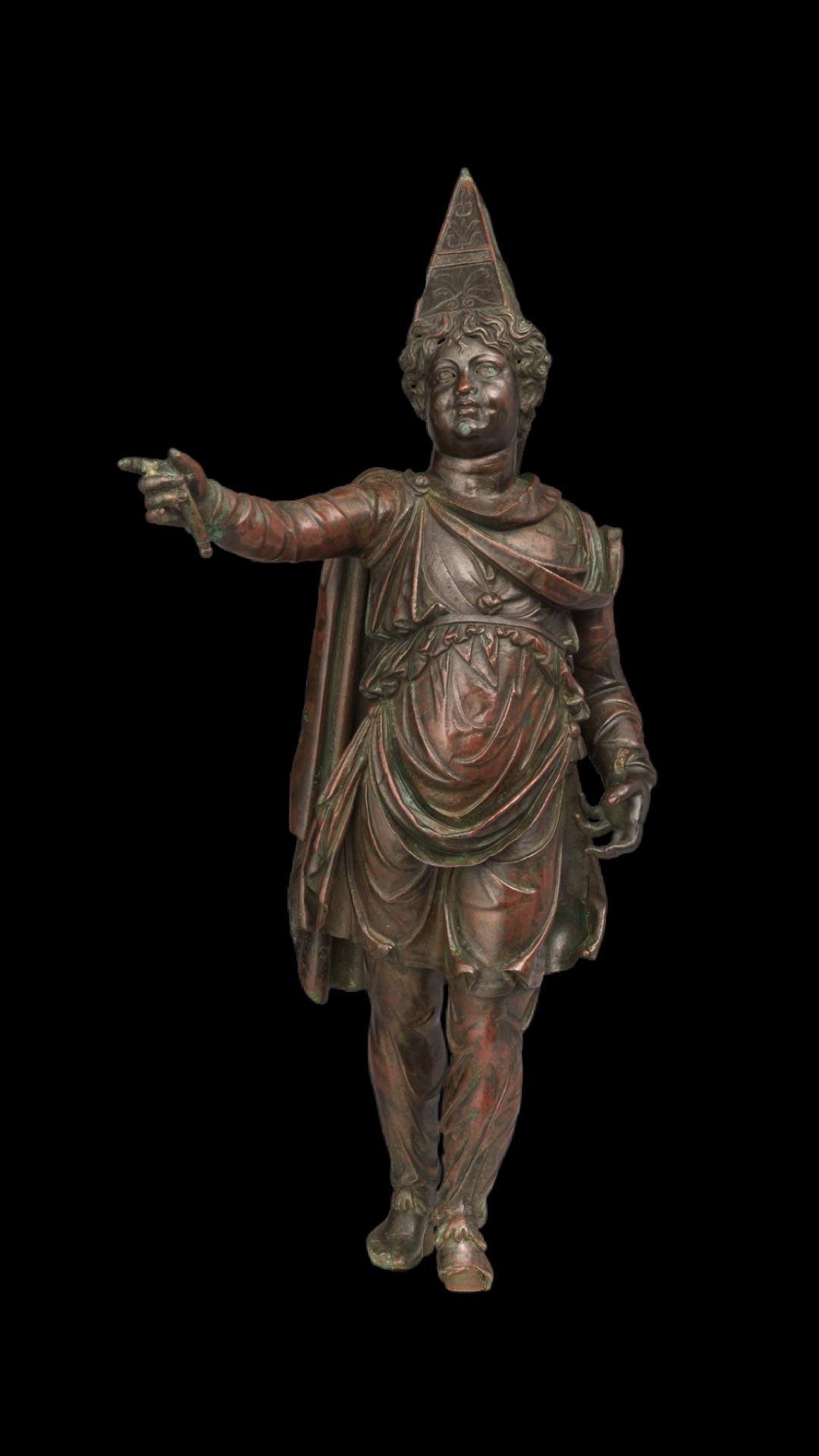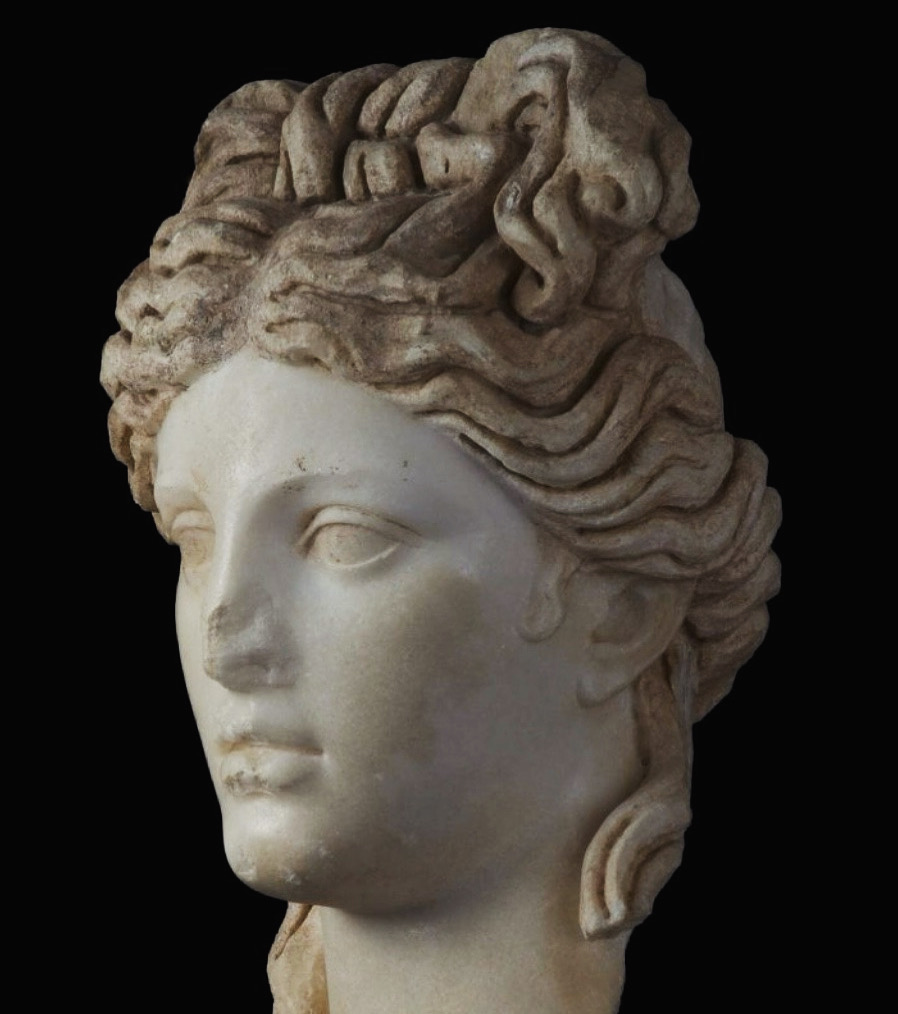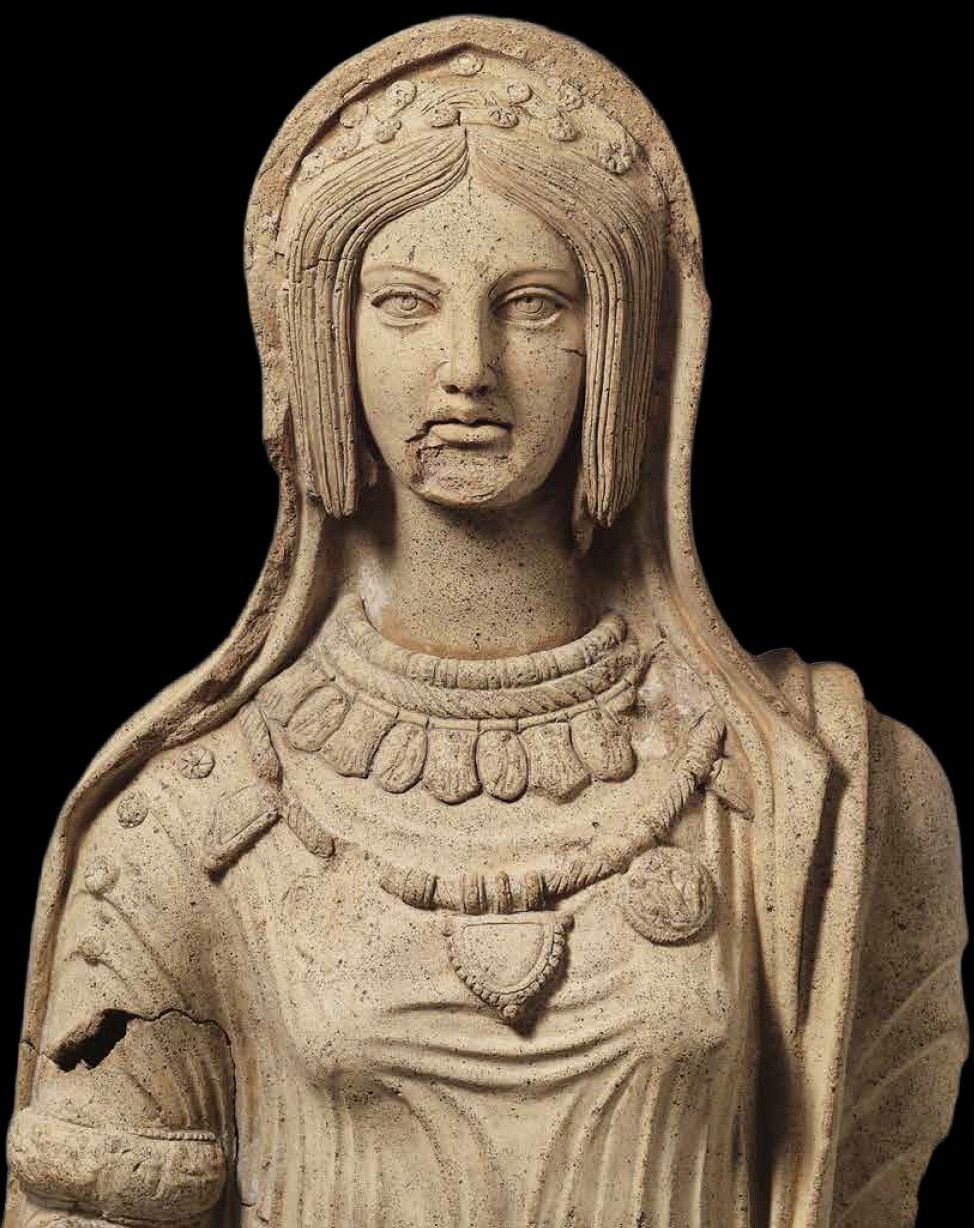Victory wings in here, her peplos pressed against her body with skirts fluttering in the wind. She is only 7.3 centimeters tall, but the amount of detail rendered in that hard, shiny chalcedony is staggering – a Roman inheritance in miniature of earlier monumental Nikai in Olympia, Samothrace and beyond.

Chalcedony (and other hard, shiny stones in various stripes and colors) was imported to considerable fanfare and at significant expense to Rome. And the luxurious fashion of carving these semi-precious chunks into miniature sculpture (including portraiture – more on that in a different post) was the continuation of an established Ptolemaic tradition.
This Victory once had separately rendered wings, head, and arms, perhaps in a fancy contrasting material. It is not abundantly clear what function she might have served, but a compelling suggestion is as the elaborate finial of a sceptre, with martial overtones and a cunning design seeing her alight upon a small globe.
I enjoy this photograph in particular, as the lighting behind shows the carver’s clever use of the stone’s veining to great effect – with more substantial flesh slightly darker and the surrounding streaming folds a more translucent cream. Brilliant!




